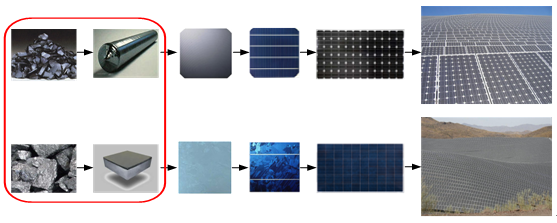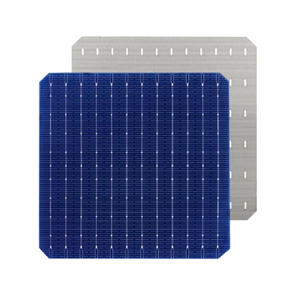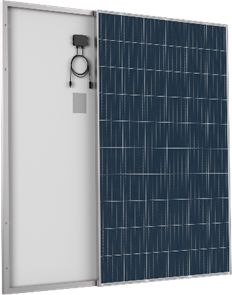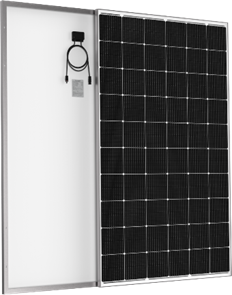what is the difference between mono and poly solar panels?
2023-06-11 | Industry Knowledge

Solar panels are important devices that convert sunlight into electricity. On the market, you will find two common types of solar panels: monocrystalline solar panels and polycrystalline solar panels. This article will explain the difference between the two types, including the manufacturing process, materials, power generation efficiency and characteristics, while providing guidance on how to choose the right solar panel for your needs.
Production process and materials:
 |
 |
| Polycrystalline solar cells | Monocrystalline solar cells |
Monocrystalline solar cells: Monocrystalline solar cells are manufactured by melting and cooling silicon raw material into a pure crystalline rod. The crystalline rods are then sliced into thin slices to form monocrystalline silicon solar cells. This process requires high temperature and high purity silicon material, so the cost is high.
Polycrystalline solar cells: Polycrystalline solar cells use sheets of material cut from blocks of polycrystalline silicon. This fabrication process is relatively simple and low cost because polysilicon does not require high temperature and high purity silicon material.
Power generation efficiency:
 |
 |
| Polycrystalline solar panels | Monocrystalline solar panels |
Monocrystalline solar panels: Because the crystal structure of monocrystalline solar cells is more orderly, electrons move more easily in them, so they have higher power generation efficiency. A typical monocrystalline solar panel has a conversion efficiency of around 15% to 23%.
Polycrystalline solar panels: The crystal structure of polycrystalline solar cells is relatively messy, and the movement path of electrons is longer, so the power generation efficiency is slightly lower than that of monocrystalline solar panels. A typical polycrystalline solar panel has a conversion efficiency of about 13% to 19%.
Features and advantages and disadvantages:
Monocrystalline solar panels: Monocrystalline solar panels perform better with lower light intensity, so they can still produce high power output on cloudy days or early morning/evening. In addition, monocrystalline solar panels are relatively small, so they are suitable for applications where space is limited. However, due to the complexity of the manufacturing process, the cost of monocrystalline solar panels is relatively high.
Polycrystalline solar panels: Polycrystalline solar panels are more adaptable to environments with higher light intensity, so they perform well in sunny areas. In addition, polycrystalline solar panels are relatively inexpensive to manufacture, making them relatively affordable. However, due to its larger size, more installation space is required.
Main uses and selection guidelines:
Main usage: Whether monocrystalline solar panels or polycrystalline solar panels, they can be used in a variety of applications, including home photovoltaic systems, commercial buildings, solar power plants, and more. You can choose the appropriate type according to your actual needs.
Selection Guide: To choose the right solar panel, you should consider the following factors:
Budget: If you are on a budget, polycrystalline solar panels may be a more affordable option.
Space: If you have limited installation space, the smaller size of monocrystalline solar panels may be more suitable for you.
Geographical location: If your area is sunny, polycrystalline solar panels may be a good choice; if you often face cloudy or low sunlight conditions, monocrystalline solar panels may be more suitable.
Conclusions:
There are differences between monocrystalline solar panels and polycrystalline solar panels in the manufacturing process, materials, power generation efficiency and characteristics. Monocrystalline solar panels have higher power generation efficiency and the ability to adapt to low-light environments, but the cost is higher. Polycrystalline solar panels have lower cost and greater ability to adapt to high-light environments. Factors such as budget, installation space and geographical location should be considered when choosing the right type of solar panel. No matter which type you choose, solar panels are an important solution for sustainable energy, providing us with clean electricity.
Back To The List
